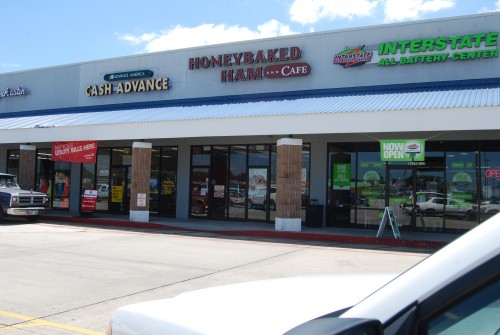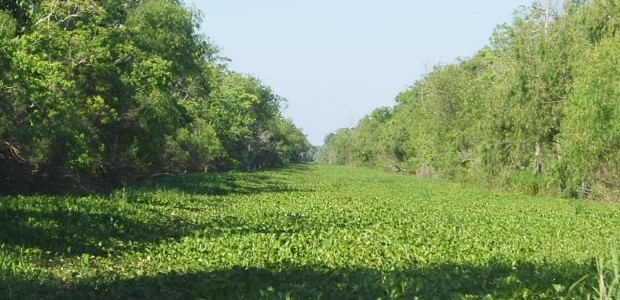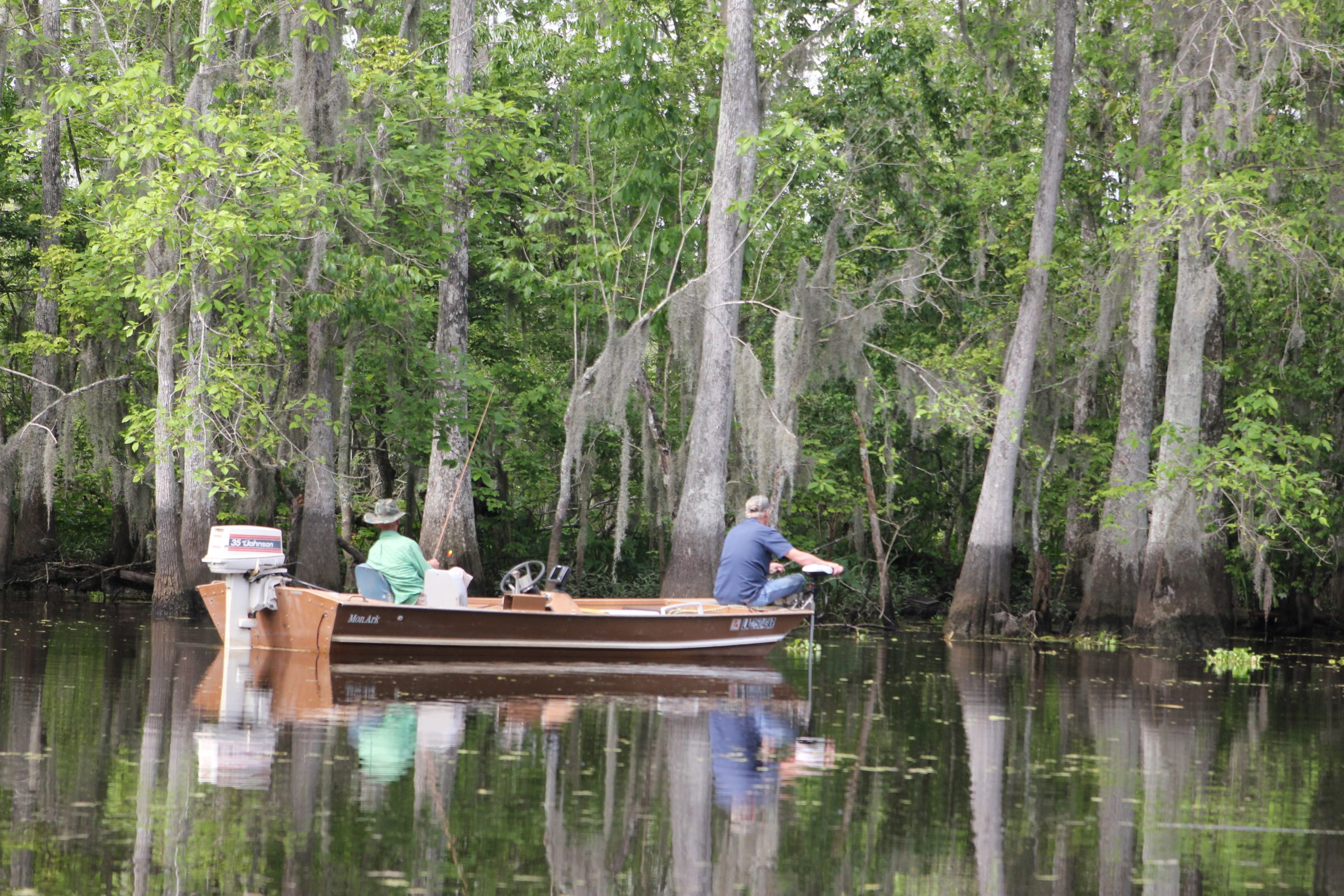
Café shines with flavorful lunch-time sandwiches
May 2, 2012TP-T wins 5th-straight Newspaper of the Year award
May 9, 2012Regular boaters on Tri-parish waterways have undoubtably seen or been stopped short by the unruly growth of salvinia and water hyacinths in the area’s freshwater aquatic byways.
“The water hyacinths in the area have not been sprayed since last fall,” said Dr. Dearl Sanders with the Bob R. Jones-Idlewild Research Station of the LSU AgCenter in Clinton. “The two problems with the water hyacinth are, one, we had very little winter, and the temperatures did not get cold enough to kill it. So now we are dealing with two seasons worth of the plant. Second, the New Orleans District of the U.S. Corps of Engineers has faced budget cuts and is no longer spraying the growth.”
According to Sanders, the Louisiana Department of Wildlife and Fisheries has typically sprayed hyacinth-infested waters north of U.S. Highway 90, and the corps has sprayed waters south of the highway.
“Before our budget cuts, we were spraying these areas, and this year, we were not provided the funding,” said Chris Acarrdo, chief of operations division for the corp’s New Orleans office. “We are responsible for maintaining federal waterways such as Bayou Lafourche, Belle Pass, the Houma Navigational Canal and the Intracoastal Waterway.”
Spraying in Terrebonne cost the corps $1.5 million a year, and Terrebonne Parish President Michel Claudet is concerned about what will be done to maintain local waterways.
“The corps has quit spraying, and they have indicated to me that this is the end of spraying in the parish. It will cost $1 million a year to get on top of this, and I [the parish] can’t pick up that,” Claudet said. “I have spoken to the congressional delegation about the problem, and I hope they are making progress.”
What will be done to control the plant is uncertain, but complaints are reaching the corps and parish president’s offices.
“Recreational boaters in the parish have been calling me, and Bobby Breaux from Bob’s Bayou Black Marina in Gibson has told me that boaters can barely get through the canals near his business,” the parish president said. “I’ve got complaints coming in from all over, but they are mostly concentrated in Chauvin, Lake Boudreaux, Dularge and western parts of the parish.”
The plant’s history in the area can be traced back more than 100 years.
It was widely distributed during the 1984 World’s Fair in New Orleans, according to Sanders. “People saw the pretty flowers the plant made, took them home and put them in their ponds,” he said. “You see where that led.”
Breaux said the problem has grown tremendously over the past two or three month, and he is concerned the unchecked spread of the plant could eventually put him out of business, even though boat traffic has not slowed yet at his marina.
“I’ve got people complaining when they get off the water – fishers who can’t get to their fishing spots, oil company workers who can’t get to their platforms and camp owners that can’t get to their camps,” Breaux said. “I’ll have to shut my doors if they don’t do something about this. It’s not hurting me yet, but people aren’t going to come back if there is no place to fish.”
While the yearly cost to control water hyacinths on a large scale comes with a $1 million a year price tag, it is almost nothing in comparison to spraying cost of the area’s other aquatic annoyance – salvinia.
“Water hyacinth can be controlled with herbicide at a cost of $10 to $12 an acre, and it takes one or two applications to keep it under control,” Sanders said. “Salvinia costs $50 to $150 an acre to treat, and it takes many applications to get it under control.”
According to Sanders, salvinia takes up several hundred thousand acres in St. Charles, St. James, Lafourche and Terrebonne parishes, but there is light at the end of the tunnel for getting the salvinia under control at a far cheaper cost.
“Salvinia weevils have been used to combat salvinia in Australia and Indonesia, and they are native to South America, where the plant is from,” Sanders said. “We are breeding and using the weevils to kill salvinia in local ponds. We have shipped more than 650,000 weevils from these ponds across the state to the National Park Service, the U.S. Fish and Wildlife Service and LDWF. The weevils are effective in controlling the salvina. You can never get rid of salvinia, but you can keep it under control.”
The ponds are about an acre each in size and were treated with the weevils beginning in 2010 and 2011. A brown trail snaking through the growth and the occasional open patch of water show the bugs’ progress.
“It takes about three or four years for the weevils to get rid of the plant in a given area,” Sanders said. “Salvinia grows incredibly fast. It has a steep growth curve. It takes it a while to get established but once it does, it has an 80 percent per day growth rate. It almost doubles in size every day and that is incredible for biological organism. Water hyacinth grows much slower, not a tenth as fast as the salvinia.”
The spread of the plant is no doubt quick, as it has only been in the state since 1999.
“People started building koi ponds and installing fountains in yards, and there were no laws prohibiting the sale of these plants at stores who furnished these landscaping supplies,” Sanders said. “When it started taking over fountains and ponds, people scooped it up and threw it in ditches. Former state Agriculture and Forestry Commissioner Bob Odom quickly prohibited the sale of the plant when the problems it caused were seen.”
At the time, the plant was mostly a problem in places like Cameron Parish, Houma and Toledo Bend. “It was in check for a while, but by 2006, it was everywhere, even lakes in north Louisiana,” Sanders said.
While the weevils are working in the southern part of the state, such is not always the case up north, where the plant can stand colder temperatures than the weevils.
For those concerned about what the weevil will eat once it consumes all the salvinia, have no fear.
“The salvinia weevils only eat salvinia, and when they leave the waterway to find more salvinia and get on dry land, they are eaten by fire ants. We finally found a use for fire ants,” Sanders said, laughing.
In addition to the test ponds projects, which were partially paid for by an aquatic weed fund paid into by the state’s boat and trailer owners and LDWF, studies have also been done to see how long plants like water hyacinth and salvinia can live out of the water.
“Both plants can travel on boat trailers, and salvinia can live up to nine days on a boat trailer, longer if it is wedged in moist carpet between boat and trailer,” he said. “Make sure to clean your boat and trailer thoroughly after you fish.”
Sanders, like many others, knows that the unchecked spread of both plants could be detrimental to the Tri-parish area, which is great example of the state’s nickname of the Sportsman’s Paradise.
“These plants are causing a loss of recreational waters and duck habitat,” Sanders said. “Ducks need open ponds to land in, and sunlight reduces the oxygen levels in the water causing the fish to leave. We need to make these large tracts of water useful again.”
Mandalay National Wildlife Refuge is experiencing major problems with water hyacinth and salvina, two invasive aquatic plant species that are choking off access to fishing spots. Once the water hyacinth grows thick enough in a given area, Cuban sage grass, pictured, grows on top of the plant, making an area of water appear to be a meadow.











